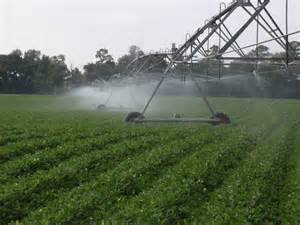Let’s begin with crops. In 2011 it was reported that 77% of the world’s food was coming from grains being grown on 11% of the worlds land. Rice, wheat, and corn were/are the big players. We mentioned in Part 8 of this series that industrial farming of these crops was putting a heavy toll on the nutrients in the soil needed to sustain the next crop. Response… commercially produced inorganic chemical fertilizers – we will make these nutrients in a factory and spread them over the fields. Massive irrigation systems were developed to water these large fields and allow us to use land that would otherwise not be able to support these crops. Commercially produced pesticides to reduce the enormous numbers of insect pests – whose populations were also increasing with the increase in food sources. Reducing pests equals higher yield. High-yield grain varieties – science had been able to develop new strains of grains that could produce quicker and even produce their own defenses against insects. But with this success there has been a cost.
There was a statement in the textbook I used when I taught this class saying – “according to many analysts, agriculture has a greater harmful environmental impact than any other human activity and these environmental effects may limit future food production”. Let’s look at some of these negative impacts.
Soil. Topsoil erosion is a serious problem in many parts of the world. Naturally the overlying vegetation holds the soil, retains water, and exchanges nutrients. When the native vegetation is removed for agriculture, the soil blows/washes away, it becomes drier, and the nutrients are not replenished. In 2011 it was estimated that 33% of the world’s cropland was losing soil faster than it was being replaced. In some locations this has been so extreme that the land has actually been converted into a desert – a process called desertification. Water used in irrigation has small traces of salt. When sprayed over a field in more arid areas – it evaporates quickly leaving behind the salt, which can kill the crops – a process called salinization. In some areas the water from irrigation causes the natural water table to rise, soaking the crops and killing them – a process called waterlogging.
Genetically Modified Food. The advances in genetically modified food have had both positives and negative results. One the positive side – many of these crops do not require fertilizers – need less water – more resistant to insects, disease, frost, and drought – they grow faster and at higher yields. The negatives include – irreversible and unpredictable genetic and ecological effects to the neighboring environment – possible harmful toxins produced by mutations of these GM plants – new allergens – lower nutrition – an increase in pesticide resistant insects and weeds – and can harm beneficial insects.
Industrialized Meat Production. Advantages include – increased meat production – less land use – reduced overgrazing – and reduced soil erosion. Negatives include – large inputs of grain, water, and energy – higher greenhouse gas emissions (methane) – high concentrations of animal waste that pollutes – and antibiotics increases genetic resistance to microbes in humans.
Pesticides. Advantages include – increased food supply. Disadvantages include – promoting genetic resistance – kills beneficial insects – can harm wildlife and humans – expensive. Studies have shown that when pesticides are used about 95% of the targeted pests are killed. However, the 5% of insects who were naturally immune to the pesticide reproduce rapidly to fill the decrease in the population. Within five or so years, most of the pests are now immune to the pesticide. So, they need to “beef up the formula”. This again kills 95% of those pests. But, again, 5% are immune – and the cycle begins again, during each round the pesticides become stronger and stronger – this process is called the pesticide treadmill. And we all have heard of the DDT story. This was a “one time spray to kill all your insect pests” – and it did. The bad insects, but the good insects, birds, and many other forms of wildlife suffered from this.
Aquaculture. Many feel the future of seafood production is in “fish farming”. They do not believe that wild harvest is sustainable with the growing population. The advantages to aquaculture include – high efficiency and high yield to small volume of water used. The disadvantages would include – requires large inputs of land, feed, and water – large waste outputs – reduces natural ecosystems – uses grain to feed some species – dense populations are vulnerable to diseases.
In Part 10 we will learn about attempts to correct some of the disadvantages – we still need food.
Reference
Miller, G.T., Spoolman, S.E. 2011. Living in the Environment. Brooks/Cole Cengage Learning. Belmont CA. pp. 674.
- Our Environment: Part 10 – Improving Agriculture - June 20, 2025
- Marine Creatures of the Northern Gulf – Snails and Slugs - June 20, 2025
- Our Environment: Part 9 – Agriculture Challenges - June 6, 2025

